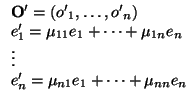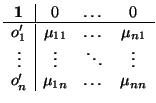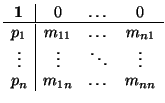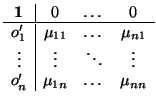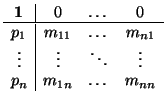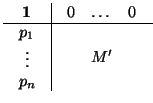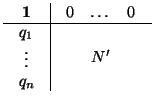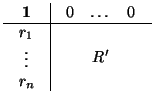Nota 3.1.14
Es importante darse cuenta de que el producto de dos matrices de
GLn(
K), que ponemos
es una matriz del mismo tipo
donde,
y esto es lo importante,
R' =
M'N'. Digo esto porque cuando estudiemos las afinidades, vamos a
``simplificar'' siempre la matriz ``inferior derecha'' y podremos hacerlo precisamente porque
la operación
producto funciona en la matriz inferior derecha exactamente como el producto de matrices de tamaño n×n.
